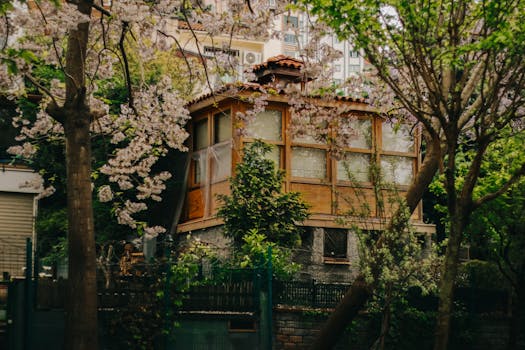
Urban Green Spaces: The Future of Outdoor Living in European Cities by 2025
Urban Green Spaces are becoming increasingly important in European cities, and it’s easy to see why. As the world becomes more urbanized, the need for green spaces has never been more pressing. By 2025, urban green spaces will play a vital role in shaping the future of outdoor living in European cities. In this article, we’ll explore the benefits of urban green spaces, the current state of green infrastructure in European cities, and what the future holds for these vital areas.
Benefits of Urban Green Spaces
Urban green spaces offer a wide range of benefits, from improving mental and physical health to mitigating the effects of climate change. Some of the key benefits of urban green spaces include:
- Improved air quality: Urban green spaces help to absorb pollutants and particulate matter, improving the air quality in cities.
- Reduced urban heat island effect: Green spaces can help to cool cities down, reducing the urban heat island effect and improving the quality of life for residents.
- Increased biodiversity: Urban green spaces provide habitats for a wide range of plant and animal species, helping to increase biodiversity in cities.
- Improved mental health: Spending time in nature has been shown to have a positive impact on mental health, reducing stress and anxiety.
Current State of Green Infrastructure in European Cities
While some European cities are leading the way in terms of green infrastructure, others are lagging behind. Cities like Copenhagen, Amsterdam, and Barcelona are investing heavily in green spaces, with a focus on sustainability and community engagement. However, other cities are struggling to prioritize green infrastructure, with limited funding and a lack of political will.
The Future of Urban Green Spaces in European Cities
By 2025, urban green spaces will play a vital role in shaping the future of outdoor living in European cities. As the world becomes more urbanized, the need for green spaces will only continue to grow. We can expect to see a range of innovative solutions, from green roofs and walls to urban forests and community gardens. Cities will need to prioritize green infrastructure, investing in sustainable and community-led projects that put the needs of residents first.
Case Studies: Successful Urban Green Spaces in European Cities
So, what can we learn from successful urban green spaces in European cities? Let’s take a look at a few case studies:
- The High Line in London: This elevated park has become a model for urban green space design, providing a peaceful oasis in the heart of the city.
- The Superkilen park in Copenhagen: This park is a vibrant example of community-led design, featuring a range of green spaces, public art, and community facilities.
- The Park Güell in Barcelona: This famous park is a masterpiece of urban design, featuring stunning architecture, beautiful gardens, and breathtaking views of the city.
Conclusion
Urban green spaces are the future of outdoor living in European cities. By 2025, these vital areas will play a crucial role in shaping the quality of life for residents, improving mental and physical health, and mitigating the effects of climate change. As we look to the future, it’s clear that cities will need to prioritize green infrastructure, investing in sustainable and community-led projects that put the needs of residents first.





